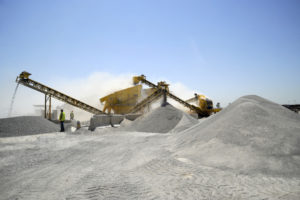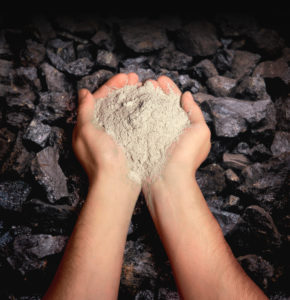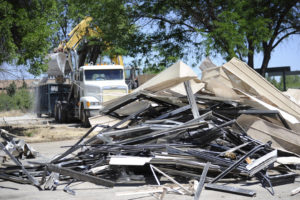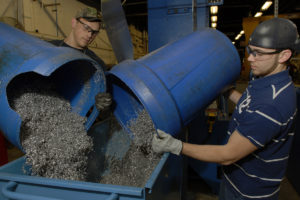Sustainable Concrete Gets Stronger: Coconut Fibers & Fly Ash Improve Durability!
- On March 28, 2025 Read More

 Beneficially reusing these by-products in various applications in place of other, sometimes virgin, materials can save landfill space/costs as well as the energy and emissions that can be associated with the manufacture of these other materials.
Beneficially reusing these by-products in various applications in place of other, sometimes virgin, materials can save landfill space/costs as well as the energy and emissions that can be associated with the manufacture of these other materials.
For example, reusing coal combustion products (CCP)—the fly ash, bottom ash, boiler slag, and flue gas desulfurization gypsum produced when coal is burned to generate electricity—can:
To learn more about coal ash recycling and reuse, see section immediately below.
Similarly:
Further Resources:
“Coal Ash Reuse” (Environmental Protection Agency)
“An American Recycling Success Story” (American Coal Ash Association)
“Recycling in the Foundry Process” (American Foundry Society)
 According to the U.S. Energy Information Administration, in 2021 roughly 898 billion kilowatt hours (kWh)—or 21.9 percent of America’s electricity—was generated by burning coal. Generating that much electricity produces large volumes of coal combustion products (“coal ash”)—solid materials left over from the combustion process.
According to the U.S. Energy Information Administration, in 2021 roughly 898 billion kilowatt hours (kWh)—or 21.9 percent of America’s electricity—was generated by burning coal. Generating that much electricity produces large volumes of coal combustion products (“coal ash”)—solid materials left over from the combustion process.
The American Coal Ash Association estimates that in 2021 more than 77.4 million tons of coal ash was produced. The good news is that over 46.5 million tons—or 60.2 percent—was beneficially used, marking the seventh consecutive year that more than half of the coal ash produced in the United States was recycled rather than disposed.
There are many good reasons to view coal ash as a resource, rather than a waste. Recycling it conserves natural resources and saves energy. In some cases, products incorporating coal ash perform better, and can be made less expensively, than products manufactured without it. For instance, coal ash makes concrete stronger and more durable. The American Road and Transportation Builders Association estimates that the use of coal fly ash in concrete roads and bridges saves highway builders more than $5 billion per year.
Use of coal fly ash also reduces the need to manufacture cement for concrete, resulting in significant reductions in greenhouse gas emissions. In fact, over 10 million tons of greenhouse gas emissions were avoided by using coal ash to replace cement in 2021 alone.
Despite the economic and environmental benefits associated with the beneficial use of coal ash, it is sometimes misleadingly characterized—by the media, legislators, and non-governmental groups—as a toxic material. The stigma created by incorrectly labeling coal ash “toxic” or “hazardous” can make people uneasy at the prospect of using materials that incorporate it.
In 2015, the U.S. Environmental Protection Agency weighed in on this issue. After years of study, the agency published its final rule on coal combustion residuals, regulating coal ash disposal as a “non-hazardous” material. Its ruling lifted the regulatory uncertainty around the use of coal ash—helping boost recycling rates to new highs and reducing the levels sent to landfills and disposal ponds.
Today, major uses of coal ash include concrete, gypsum wallboard, blasting grit, roofing granules, and a variety of geotechnical and agricultural applications. Researchers work to develop the scientific underpinning for new beneficial use cases on a continual basis.
Further Resources:
Coal Ash Facts (American Coal Ash Association)
Disposal of Coal Combustion Residuals from Electric Utilities (Environmental Protection Agency)
What Is U.S. Electricity Generation by Energy Source? (Energy Information Administration)
Use of coal ash in concrete has reduced greenhouse gas emissions by this many tons already this year.
 Construction and demolition (C&D) materials consist of the debris generated during the construction, renovation, and demolition of buildings, roads, bridges, and other infrastructure. According to the Environmental Protection Agency (EPA), 534 million tons of C&D debris were generated in the United States in 2014—more than twice the amount of municipal solid waste produced (i.e., everyday trash items that come from homes, institutions such as schools and hospitals, and commercial sources such as restaurants and small businesses).
Construction and demolition (C&D) materials consist of the debris generated during the construction, renovation, and demolition of buildings, roads, bridges, and other infrastructure. According to the Environmental Protection Agency (EPA), 534 million tons of C&D debris were generated in the United States in 2014—more than twice the amount of municipal solid waste produced (i.e., everyday trash items that come from homes, institutions such as schools and hospitals, and commercial sources such as restaurants and small businesses).
C&D debris often contains heavy, bulky materials such as concrete, wood, metals, asphalt, gypsum, bricks, glass, and building fixtures. As with many other items in the waste stream, these have economic value that can justify their recycling—for example:
In addition to the economic value of recycling such materials, environmental benefits include conserving landfill space as well as a portion of the energy and emissions associated with producing these products from virgin materials.
Further Resources:
“Sustainable Management of Construction and Demolition Materials” (Environmental Protection Agency)
Construction & Demolition Recycling Association
 Most manufacturing processes in use today are reductive. Manufacturers begin with a block of material—whether metal, wood, plastic, glass, or other—and use subtractive methods such as cutting, drilling, or milling to form the desired part. These operations create scrap materials that can either be thrown out or recycled. From both an environmental and economic perspective, recycling such pre-consumer materials is preferable. For example:
Most manufacturing processes in use today are reductive. Manufacturers begin with a block of material—whether metal, wood, plastic, glass, or other—and use subtractive methods such as cutting, drilling, or milling to form the desired part. These operations create scrap materials that can either be thrown out or recycled. From both an environmental and economic perspective, recycling such pre-consumer materials is preferable. For example:
Further Resources:
“Manufacturers Could Profit from Swarf Processing System” (The Engineer)
“A Solid Approach” (Recycling Today)